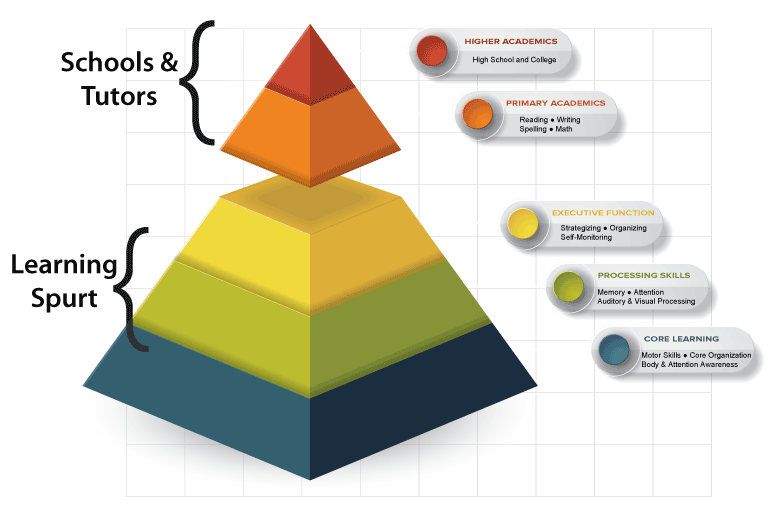Have you ever taught a child how to ride a bicycle or do you remember what it was like to learn yourself?
Just balance, steer, and pedal, right? Still, how do you teach balance? It’s something you have to learn to feel.
Once you get it though, everyone takes balance for granted.
Learning is similar. There are many underlying abilities that are like balance. It’s hard to learn to read and spell if you can’t “hear” the sounds correctly. Auditory and visual processing, memory, attention, organization and motor skills—all are essential, but are typically assumed and taken for granted.

What happens when a child has a deficiency in one of the fundamental abilities? Even bright kids struggle. After a while, parents may hear that their child has ADD or some kind of learning disability.
It gets worse. Parents and kids are usually told that learning disabilities just happen and you have to learn to live with it. All kinds of “accommodations” are recommended, but these are just band-aids.
Most so-called learning disabilities and even ADD are caused by underdeveloped fundamental abilities. Improve the fundamental skills, and the “learning disability” disappears.
For the kids, it’s like trying to learn to ride a bike that has a flat tire—everything is much, much harder.
Our methods impact three levels of fundamental learning.
Executive Function - Executive functions are the CEO of the brain. It’s the key to get things done—from the planning stages of the task to the final deadline.
Executive functions include planning, organization, memory, time management, focus and flexible thinking.
Processing Skills - Processing skills are the tools a student uses to handle incoming information. When a student has processing gaps, the learning process will take longer, consume more energy, and is more frustrating.
Brain research shows that frequency, intensity and duration are key for creating permanent changes in the brain. Improved processing skills result in improved memory, attention, processing, reasoning, visualization and logic.
Core Learning Skills - Neurological connections in the brain should occur early in development. The connections are critical to comfortable learning and functioning. To build and fully develop the needed connections, we use movement to develop learning and increase mental flexibility.
Core learning exercises work to integrate reflexes, build body awareness and control, increase attention and concentration, and develop visual skills and internal organization.
Research shows that 30% of all children have gaps in their fundamental learning abilities. It’s a shame. These kids end up believing they are somehow dumb and just not as worthwhile as their classmates and siblings.
With the right treatment, the fundamental learning gaps can be permanently resolved. It still requires some work to master reading, writing, spelling, math, and higher academic skills. But, it’s not the impossible struggle it was before.
© 2016 Learning Spurt, LLC. All Rights Reserved.